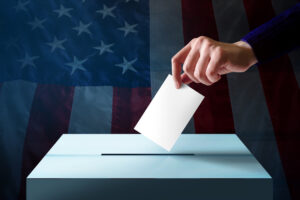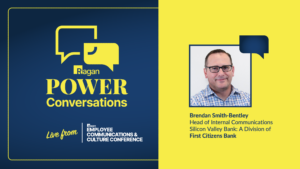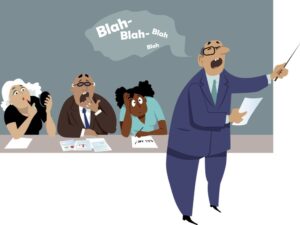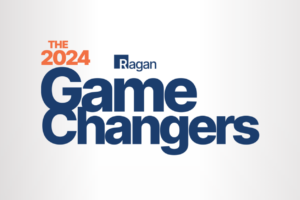How communicators can build bridges during tough conversations
Communicating internally about the Israel-Hamas war isn’t easy, but comms can help broker sensitive dialogue among employees by using the right strategies.

How can internal communicators even begin to acknowledge the pain their employees feel over the conflict in the Middle East when it’s a topic that divides so many? Over the past few weeks, members of the Ragan community have shared harrowing accounts of communal chats that have been suspended due to inflammatory and triggering language. Some have even received death threats.
This is where the idea of bridge-building communications comes in.
“We recommend leaders consider their role as facilitators or bridge-builders of these conversations rather than the holders of some absolute ‘truth,’” wrote Toronto DE&I consultancy Feminuity in a recent resource shared with its audience.
“Building bridges asks us to engage in messy, emotion-filled, complex conversations. It asks us to lean into discomfort, engage with perspectives we disagree with, and ensure we always acknowledge the humanity in others in the process. The role of bridge builders is significant in fraught times when it becomes challenging to find common ground.”
We spoke with Feminuity co-founder and CEO Dr. Sarah Saska, PhD to learn more about the advice espoused in her newsletter. She noted that most DE&I practitioners were blindsided by the escalation of violence in Israel and Gaza because it pointed to the fact that Islamic and Jewish constituents were often unacknowledged in enterprise DE&I strategies.
That’s starting to change, however.
Here’s what we learned.
Getting curious while protecting humanity
Feminuity recommends leaders begin by staying up to date on how the latest factual information about the Israel-Palestine conflict may be informed by biased narratives, which exist in academic writing, social justice spaces and other channels that seem impartial at first glance. Maintaining this level of objectivity is similar to a piece of advice often espoused in media relations: Think like a journalist.
“Thinking like a journalist, that’s getting to the pragmatic,” said Saska. “It’s almost a roadmap of what it means to be curious. What is that checklist of how to do some due diligence? Add in a layer of fact checking, media bias, AI bias too.”
Citing the work of writer, activist and facilitator Adrienne Maree Brown, Saska recommends communicators ask: “Is everyone’s humanity being protected in this?”
“That’s a good way of catching all the different kinds of bias that are present.”
Inclusive language considerations
The consultancy then recommends that leaders encourage those in conversation to name their feelings, acknowledging that one of the main reasons the Israel-Palestine conflict is so tricky to discuss is because it carries nearly 75 years of pain and trauma — all of which have evolved for those who were born into it and experience it daily.
Feminuity uses a tool called “Name It,” centered around the Gottman Institute’s Feeling Wheel, to help identify how a person may be feeling and unlock empathy around complex emotions.
“Understanding what this means for people is a critical part of any discussion, and our Name It tool can help people better understand and address their feelings,” writes Feminuity. “Sometimes, acknowledging and naming feelings can help make room for more collaborative conversations.”
This is where things get hairy. Inclusive language best practices often include naming specifics, which may include naming a word that triggers someone. Specificity can hinder diplomacy.
Because of this, Saska explained that getting curious also teaches you to not use certain words that you anticipate may derail the conversation for a certain group.
“Don’t use the words ‘genocide’ or ‘ethnic cleansing.’ Have that short list that will inevitably trigger folks across the board so you can keep that shared container of people together,” Saska advised.
These triggers can also manifest in more subtle ways if words aren’t deployed with consideration for the different context they can take when describing an affected group. It could be as simple as one well-intentioned leader calling a certain comment or idea about the Middle East “tribal” — a loaded term that can simultaneously come off as racist and negate centuries of sociopolitical and cultural history when used in a pejorative sense.
“Some facilitators call it ‘don’t trigger the frame,’ i.e., things that you know are just going to be points of contention,” Saska said. “Look for the things that everyone can agree on — we don’t want any more people to die. There’s obviously about 300 roads to get to that as the shared goal. But there are still ways to talk about it.”
The sweet spot in times like this is often nothing too specific or too broad. “A practical example would be why we don’t want to use BIPOC,” Saska continued. “Are you talking about Black people, indigenous people, indigenous Canadians specifically? Whatever giant acronym is at play, it’s often not helpful to use a broad umbrella.”
Banishing binaries
Feminuity acknowledges that tackling conflicts through a binary approach is comforting, as we can understand something more easily when we categorize it simply. But the consultancy also warns that “such an approach to thinking leaves little room for multiple things to be true simultaneously.”
“The idea from this linguistic research we’re doing is that a binary approach to thinking finds its way into our words and creates opposition, then that leads to action,” explained Saska. “Inherently when you set up a question with a statement it gives the illusion of choice, but there isn’t a choice because there are already two pre-determined outcomes.”
This often happens in many standard debate structures, where binary polarization is baked in because people are glomming onto the stigma of certain assumptions made by how the debate is structured and presented.
Communicators can practice this every day in the way that we pose questions to our colleagues about sensitive issues. Consider if your questions are structured in a way that inherently or unconsciously creates opposition.
“If you’re a facilitator, if you’re a leader in the workplace, how you frame the questions on the table for dialogue matters,” said Saska.
Dissolving derailments
Those who are passionate about or sensitive to a topic are more likely to derail longer discourse, often unintentionally, because it’s easier than a prolonged discussion. “A scarcity mindset has led people or communities experiencing marginalization to feel like there is insufficient space for all experiences to be recognized,” writes Feminuity.
Feminuity names some classic types of derailments, such as zero-sum thinking and The Oppression Olympics, suggesting that leaders name them too in order to identify them and eliminate them as they manifest. Saska explained the dangers of these derailments around the idea of zero-sum thinking in particular.
“Zero-sum thinking is the idea that only one person can win,” she said. “It has that either/or vibe.”
Register now for the New York Women in Communications event, “Building Bridges: Cultivating Connections in Communications” on November 9th during Ragan’s Communications Week.








It’s also helpful to set some guidelines when having difficult conversations and facilitating dialogue. For example “I know that this brings up difficult emotions for many of us. Let’s have this discussion with the intention of sharing perspective, empathy, and learning.” Or, giving people ‘permission’ to disconnect if needed “feel free to turn your cameras off, or step away, at any point in the conversation that you need a moment.”